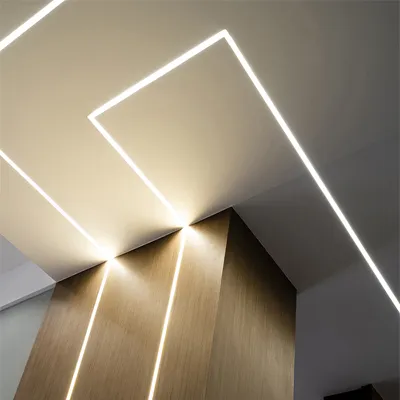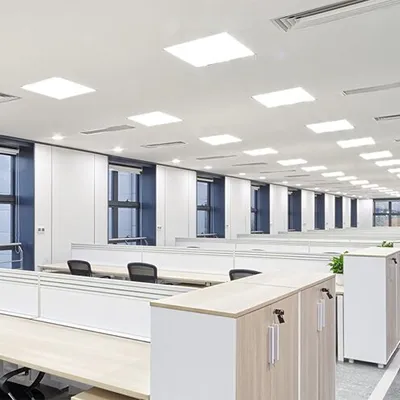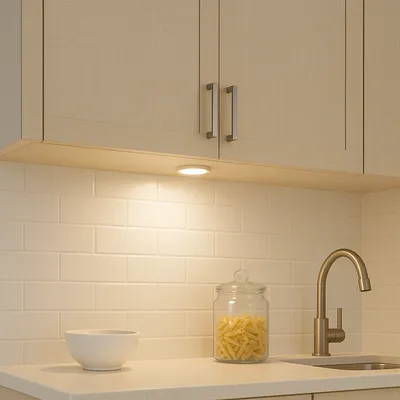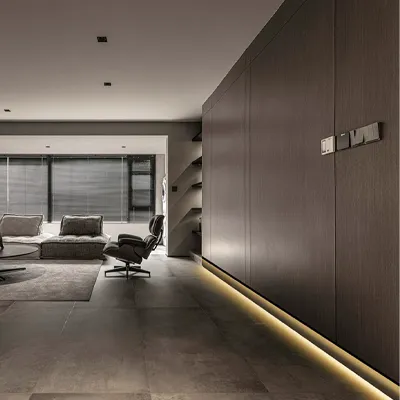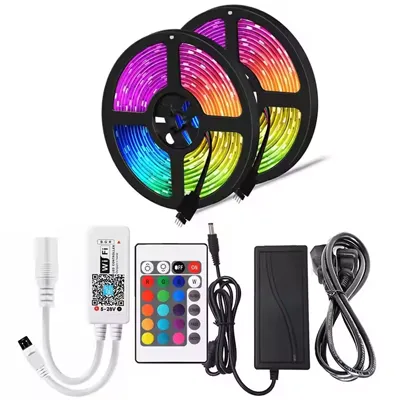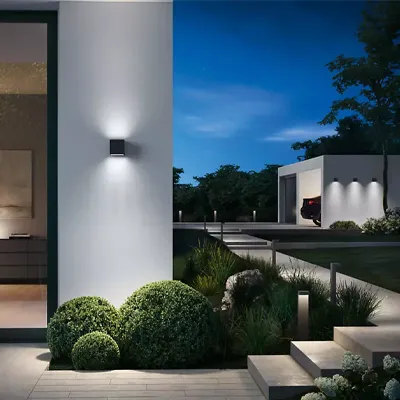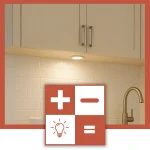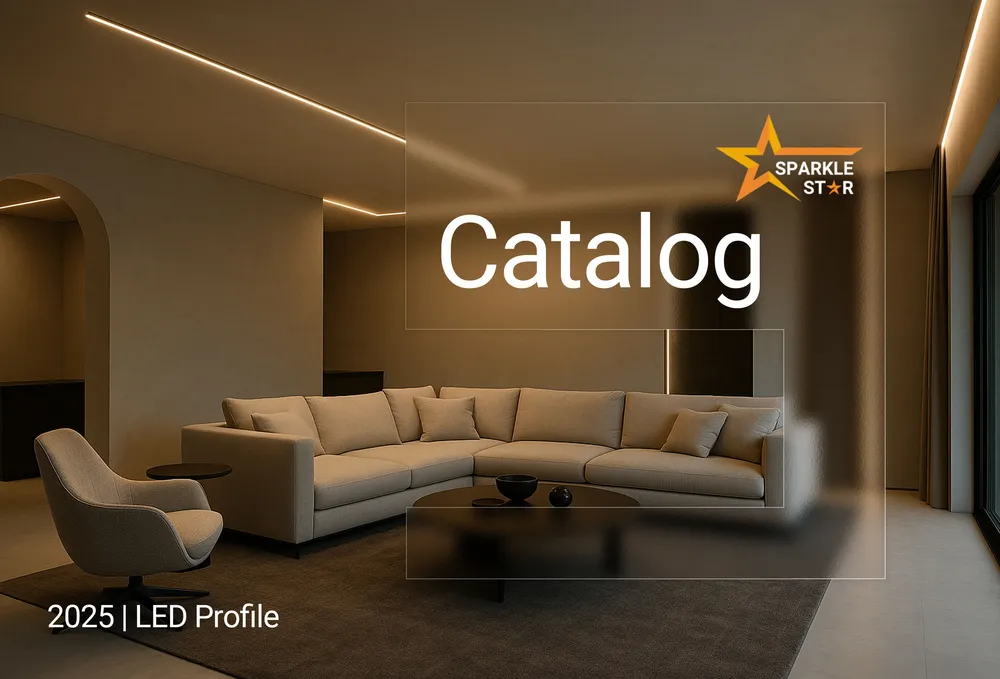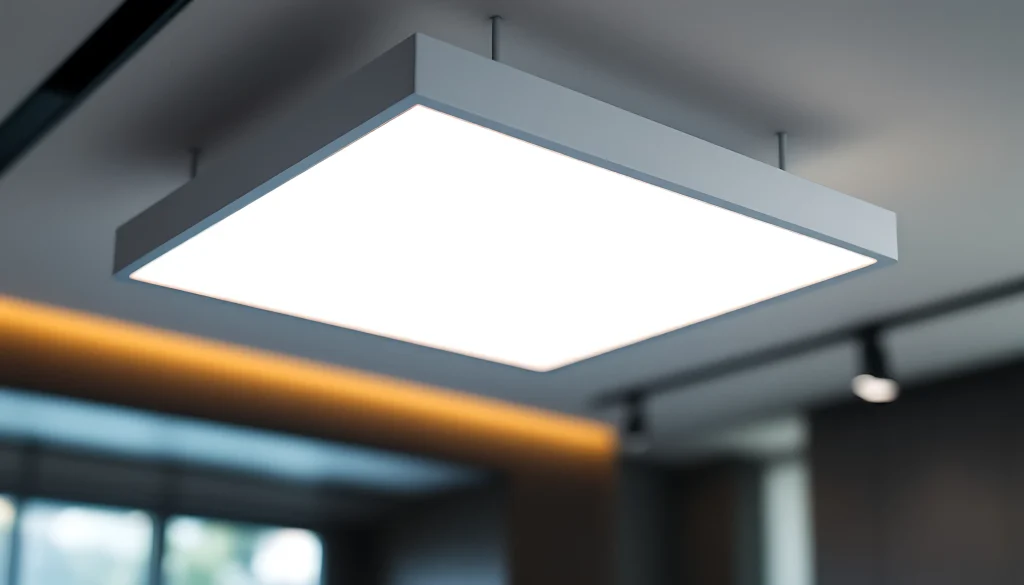
Are you looking to upgrade your commercial or institutional building’s lighting? Perhaps you need to enhance illumination in a large space, or simply want a more energy-efficient solution. The truth is, selecting the right lighting fixture is crucial. Today, we're focusing on a foundational element in modern commercial illumination: the LED Troffer. This guide will demystify what an LED Troffer is, explore its types and benefits, and help you choose the best LED Troffer Lights for your specific needs.
What is an LED Troffer?
Let's begin by defining this essential lighting component. An LED Troffer is, in essence, a rectangular light fixture. It is specifically designed for recessed installation. That is to say, it fits neatly into a ceiling grid. These grids are commonly found in offices, schools, and hospitals. They are often known as T-bar or drop ceilings.
The Essence of Recessed Lighting: Seamless Integration
The LED Troffer typically lies flush with the ceiling tile. Consequently, this creates a clean, unobtrusive, and very modern aesthetic. This design differs significantly from older shop lights. Those often hung awkwardly from the ceiling. Instead, LED Troffer Lights offer a sleek appearance. Therefore, the light source blends into the ceiling. This makes them ideal where visual cleanliness is key. They provide illumination without drawing attention to the fixture itself.
How LED Technology Powers Modern Troffers
Modern troffers harness the power of LED technology. LEDs are Light Emitting Diodes. These are solid-state semiconductors. They convert electricity directly into light. This differs fundamentally from older fluorescent tubes. Fluorescents rely on gas discharge. As a result, LEDs offer superior performance. They produce light more efficiently. Furthermore, they are much more durable. They contain no fragile filaments or glass tubes. This means less breakage. In short, LED technology delivers precise light control. It also ensures consistent illumination. That is to say, modern troffers are a significant upgrade. They provide better light with less hassle.

The Core Advantages of Modern LED Troffer Lights
Switching to LED Troffer Lighting offers substantial benefits. These go far beyond simple illumination. These advantages make them a compelling choice for any modern commercial or institutional space.
Unprecedented Energy Efficiency: Direct Cost Reductions
LED Troffer Lights are remarkably energy-efficient. They consume significantly less power. For instance, they use up to 60% less energy than older fluorescent alternatives. This directly impacts your operating budget. As a result, businesses experience substantial energy cost savings over time. These savings accumulate rapidly. Over months and years, they translate into considerable financial returns. Lower utility bills are a clear, undeniable benefit. This makes LED Troffer Lights a wise financial decision.
Superior Light Quality and Enhanced Visual Comfort
The quality of light from LED Troffer Lights is exceptional. It significantly surpasses traditional options. They offer a high Color Rendering Index (CRI). This ensures accurate color representation. It makes spaces feel vibrant. It also improves visual clarity. For instance, colors look true to life. Furthermore, LEDs eliminate common issues. Older fluorescents often flickered. They also emitted an irritating buzzing sound. LED Troffer Lights are flicker-free and silent. This dramatically enhances comfort. It significantly reduces eye strain for workers. What’s more, LED technology generates minimal heat. Consequently, your HVAC systems work less. This leads to lower cooling costs. It further improves overall indoor comfort.
Environmental Stewardship: A Greener Lighting Choice
Sustainability is increasingly vital for businesses. LED Troffer Lights are a greener choice. Firstly, they contain no toxic mercury. This contrasts sharply with fluorescents. Mercury is a hazardous substance. Thus, LEDs are safer for disposal. They pose less risk to human health. Secondly, lower energy consumption means less greenhouse gas emission. This directly reduces your carbon footprint. It helps your company meet sustainability goals. In short, choosing LEDs aligns with environmental responsibility. It benefits both your business and the planet.
Exceptional Durability and Minimal Maintenance
LED Troffer Lights boast remarkable durability. They have an extended lifespan. Typically, they last 50,000 hours or more. This means significantly less frequent replacements. For example, one LED can outlast many fluorescents. Older fluorescent systems rely on ballasts. These components often malfunction or fail. However, LED Troffer Lights eliminate this common point of failure. Consequently, maintenance needs are drastically reduced. This saves time and labor costs. It also minimizes disruption to daily operations.
Unrivaled Customization and Operational Versatility
Modern LED Troffer Lights offer immense customization. They integrate adjustable features. For example, CCT selectable options allow color changes. Wattage selectable features enable brightness adjustments. This adaptability means you can fine-tune light levels. You can match specific task requirements. You can also create desired ambiances. These adaptable features make LED Troffer Lights a wise long-term investment. They future-proof your lighting infrastructure. This reduces the need for future upgrades.

Types and Key Features of Advanced LED Troffer Lights
When exploring LED Troffer Lights, you'll find various options. Each offers unique benefits for specific applications. Knowing these features helps you select the perfect fixture.
Common Dimensions and Their Applications
LED Troffer Lights come in standard dimensions. These sizes match existing ceiling grids. For example, popular sizes include:
- 1-foot x 4-foot (1'x4'): This size fits into longer, narrower ceiling bays. They are common in hallways. Likewise, they work well in smaller private offices.
- 2-foot x 2-foot (2'x2'): These square fixtures are versatile. They fit square ceiling grids. Therefore, they are often seen in open-plan areas. They provide uniform light distribution.
- 2-foot x 4-foot (2'x4'): This is the most common size. It offers a large light footprint. Consequently, these are ideal for large open spaces. Similarly, they suit conference rooms.
Selecting the right dimension is crucial. Especially for retrofit projects. It ensures a seamless fit. Furthermore, it maintains ceiling aesthetics.
Optical Control: Shaping Light with Lenses and Reflectors
The light quality from an LED Troffer depends heavily on its optics. Lenses and reflectors play a vital role. They direct and diffuse light.
- Lens Types:
- Parabolic: This design uses a grid of parabolic louvers. It precisely directs light downwards. As a result, glare is significantly reduced. This is ideal for computer-intensive workstations. It creates a comfortable visual environment.
- Frosted/Opaque: These lenses diffuse light broadly. They spread it evenly across a space. Consequently, they reduce harsh shadows. They provide a soft, uniform illumination.
- Transparent/Clear: These maximize light output. They offer the brightest illumination. However, they may produce more glare. This needs careful consideration.
- Specular/Mirrored: These reflectors are highly polished. They offer more directional control. This means light can be focused. This is useful for specific task areas.
- Reflector Design: Internal reflectors are critical. They efficiently direct light. They prevent light from escaping upwards. This maximizes downward light. It also helps achieve uniform brightness. Consequently, light is used effectively. This enhances energy efficiency.
Smart & Adaptable: Enhanced Control Features
Modern LED Troffer Lights are far from simple on/off fixtures. They offer advanced control. These features enhance flexibility. They also boost energy savings.
- Dimmable Drivers: Most LED Troffer Lights come with dimmable drivers. These allow brightness adjustment. Common protocols include 0-10V dimming. This enables smooth light transitions. The benefit is clear: you can reduce light levels. This saves energy. It also creates customizable ambiance. For example, dimming for presentations.
- Adjustable Color Temperature (CCT Selectable): This feature is highly beneficial. A single fixture offers multiple white light options. You can switch from warm white (e.g., 3000K) to neutral white (4000K) or cool white (5000K). This flexibility is key for diverse work environments. It supports different moods. It also suits various tasks throughout the day.
- Adjustable Wattage (Wattage Selectable): Some advanced LED Troffer Lights include this. A single fixture offers multiple lumen outputs. For instance, you can select between 30W, 40W, or 50W. This provides flexibility. It suits different room sizes. It also matches varying target illuminance levels. Consequently, inventory management simplifies for distributors.
- Emergency Backup Integration: For safety, this is crucial. Many LED Troffer Lights integrate emergency backup battery packs. These activate during power outages. They provide essential egress lighting. Therefore, occupants can safely exit. This ensures compliance with building codes. It is a must-have for public buildings.
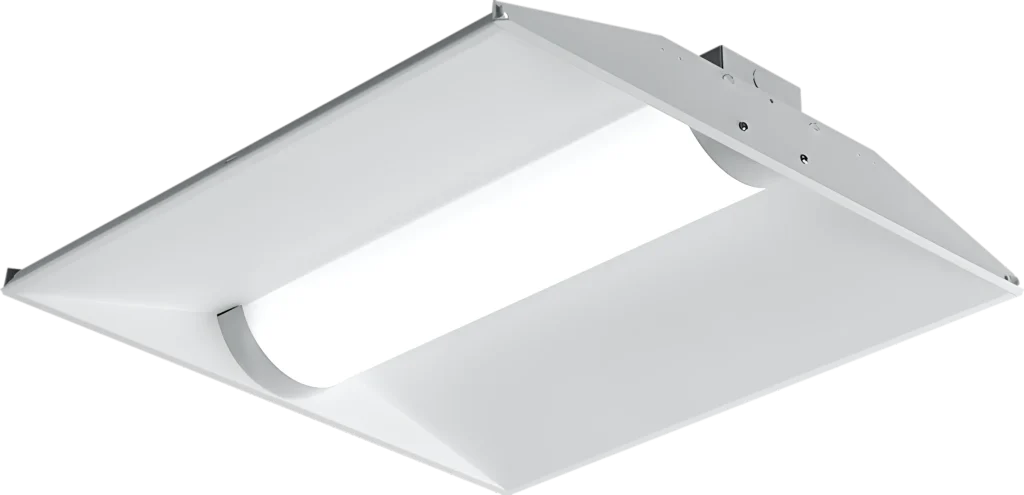
Key Technical Specifications for Optimal LED Troffer Performance
To make informed choices, understanding these specific metrics is essential. They precisely define the quality and suitability of the light emitted by your LED Troffer Lights.
Illuminance (Lux) and Lumen Efficacy: Measuring Brightness and Efficiency
Illuminance measures how much light falls on a surface. It is given in lux (lx). For instance, general office areas typically need 300-500 Lux. Lumen efficacy, conversely, measures how efficiently a light source produces visible light. It's calculated as lumens per watt (lm/W). High efficacy means more light for less energy. Modern LED Troffer Lights boast impressive efficacy. This contributes directly to significant energy savings.
Here's a detailed guide to recommended illuminance levels for various areas where troffers are common:
Application Area | Recommended Lux Range | Recommended Lumens per Sq. Ft. |
|---|---|---|
General Office/Classroom | 300-500 Lux | 40-50 lumens |
Conference Rooms | 300-500 Lux | 30-50 lumens |
Task-Intensive Areas | 500-750 Lux | 50-75 lumens |
Corridors & Lobbies | 100-200 Lux | 10-20 lumens |
Color Temperature (CCT): Setting the Visual Tone
Color temperature is expressed in Kelvin (K). It describes light's color appearance. Warm tones (below 3500K) feel cozy. Neutral tones (3500K-4500K) are balanced. Cool tones (above 4500K) feel crisp. For general office lighting, 4000K to 5000K is highly recommended. This promotes alertness. For instance, it enhances concentration. Warm light is better for break rooms. Conversely, very cool light can feel harsh. This might cause discomfort. Many LED Troffer Lights now offer CCT selectable features. This allows flexible adjustment.
Color Rendering Index (CRI): Visual Accuracy Matters
CRI indicates color accuracy. A score of 100 is perfect. It means colors appear natural. For most LED Troffer applications, a CRI of 80 or higher is good. For tasks needing exceptional color accuracy, aim for 90+. This applies to retail displays. Similarly, it matters for art studios. High CRI makes colors vibrant. It also improves visual clarity. Consequently, fewer errors occur.
Unified Glare Rating (UGR): Maximizing Comfort
UGR quantifies discomfort glare. A lower value means less glare. For example, UGR < 19 is standard for commercial spaces. For computer-intensive work, aim for UGR < 16. LED Troffer Lights can achieve low UGR. They often use parabolic louvers or micro-prismatic lenses. These designs manage light distribution. Therefore, visual comfort is maximized. This directly reduces eye strain.
Flicker-Free Operation: A Subtle but Important Benefit
Flicker refers to rapid light fluctuations. It is often imperceptible to the eye. However, it can still cause eye strain. It may also lead to headaches. Consequently, prioritizing flicker-free LED drivers is essential. This ensures a stable light output. It eliminates hidden visual stressors. High-quality LED Troffer Lights guarantee this smooth illumination.
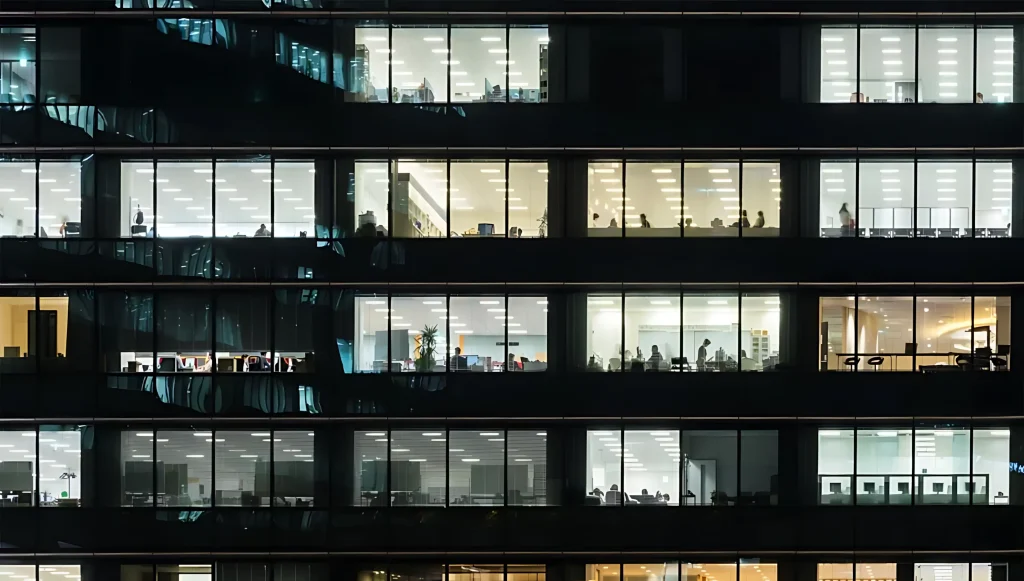
Versatile Applications of LED Troffer Lights
LED Troffer Lighting is incredibly versatile. It’s a solution for many diverse settings. Its benefits make it attractive across various commercial, institutional, and even select residential environments.
Offices and Educational Institutions
LED Troffer Lights are a go-to choice here. They are widely used in office buildings. They provide bright, even light. This improves productivity. It also reduces eye strain for workers. Similarly, they are very popular in schools. Colleges and universities likewise benefit. They create clear, consistent illumination. This significantly improves the learning environment. That is to say, students focus better.
Commercial and Retail Environments
Beyond offices, LED Troffer Lights excel elsewhere. In retail spaces, for instance, they highlight merchandise. They make products stand out. This creates an inviting shopping experience. Customers feel more comfortable. Healthcare facilities also widely adopt them. Hospitals, clinics, and nursing homes need consistent light. LED Troffer Lights provide this. They improve patient comfort and safety. In the same vein, the hospitality sector uses them. Hotel lobbies and meeting rooms install them. They create appealing atmospheres. They also highlight key features.
Industrial and Specialty Settings
LED Troffer Lights are robust. They suit tough environments. Manufacturing facilities and warehouses utilize them. They supply bright, even lighting. This improves safety. It also boosts productivity in factories. For instance, workers see clearly. Residential spaces also increasingly feature them. Apartments and homes benefit too. They provide energy-efficient lighting. This improves comfort. It also reduces energy costs for homeowners.
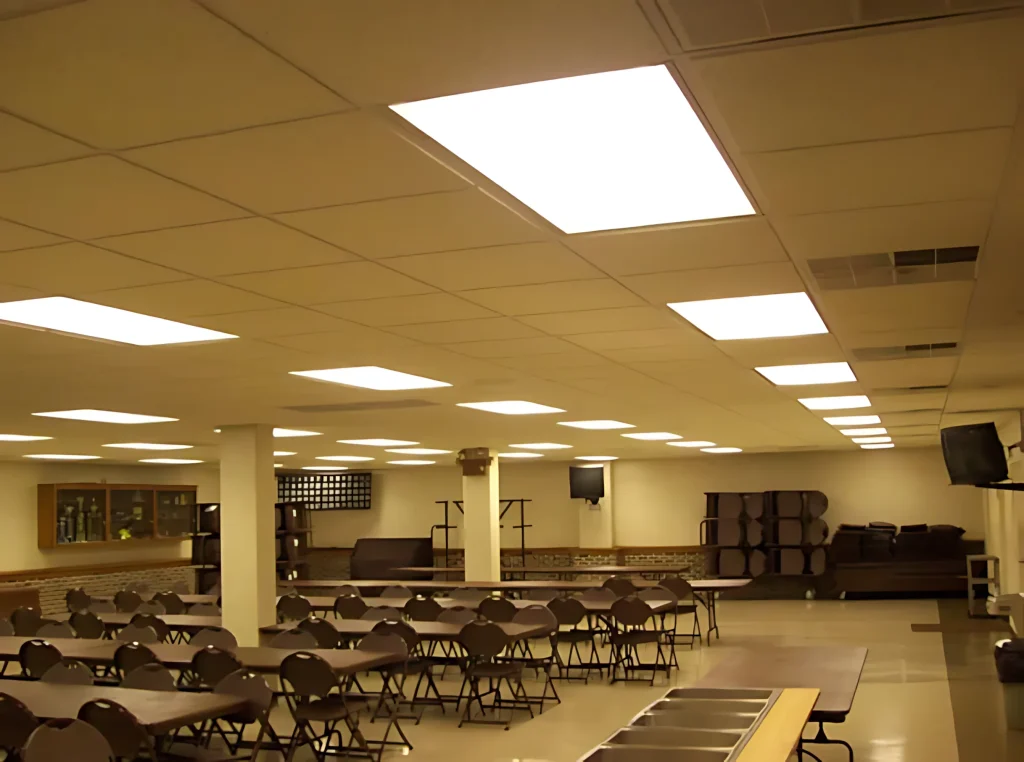
LED Troffer Lights vs. LED Panel Lights: Choosing the Right Fit
Both LED Troffer Lights and LED Panel Lights are popular for commercial ceilings. They offer distinct characteristics. Understanding these helps you choose wisely.
LED Panel Lights are generally thinner. They often feature edge-lit designs. They provide highly uniform and diffused light. This makes them ideal for modern designs. They suit minimalist aesthetics. For example, a very flat light source is achieved. They often boast excellent UGR values. This means less glare.
LED Troffer Lights, conversely, can have deeper housings. They sometimes use direct-lit designs. They frequently incorporate advanced optical controls. This includes parabolic louvers. These offer more controlled light distribution. They also provide superior glare management. Consequently, light is directed more precisely. They are often ideal for retrofitting. They fit existing fluorescent troffer housings. This avoids major ceiling modifications.
Therefore, choose LED Troffer Lights when precise light distribution and glare control are paramount. Also, they are best for seamless retrofitting of existing systems. Opt for LED Panel Lights for a very sleek, modern aesthetic. They provide broad, uniform ambient light. Likewise, they excel in spaces where minimal visual intrusion is desired.
Strategic Selection and Seamless Integration of LED Troffers
Choosing the right LED Troffer Lights requires careful consideration. A strategic approach ensures optimal results and long-term satisfaction.
Initial Assessment and Core Specification Prioritization
Firstly, thoroughly assess your space. Measure room dimensions accurately. Determine the ceiling height. Identify the existing ceiling grid type. This is crucial if you are retrofitting. Secondly, prioritize core technical specifications. These define light quality and suitability. You need to match illuminance to activity. Select CCT based on desired atmosphere. Ensure high CRI for accurate colors. Furthermore, a low UGR is vital for comfort.
Advanced Smart Features for Enhanced Control
Smart features add value. They optimize functionality. For instance, look for integrated sensors. Occupancy sensors turn lights off. Daylight harvesting sensors dim lights. These automatically optimize energy usage. Also, consider networked controls. DALI or Bluetooth mesh compatibility allows advanced control. This enables detailed monitoring. Ensure user-friendly interfaces are in place. Facility managers appreciate simplicity. Employees also benefit from easy customization.
Valuing Certifications and Warranties for Quality Assurance
Certifications indicate quality. They ensure compliance. Verify DLC (DesignLights Consortium) listing. This ensures performance standards. It also confirms eligibility for energy rebates. Energy Star is a key certification. It signifies high efficiency. It's especially relevant for residential applications. UL Listed status guarantees safety. It confirms compliance with North American standards. Furthermore, a robust manufacturer's warranty is vital. It protects your investment. It ensures long-term reliability.
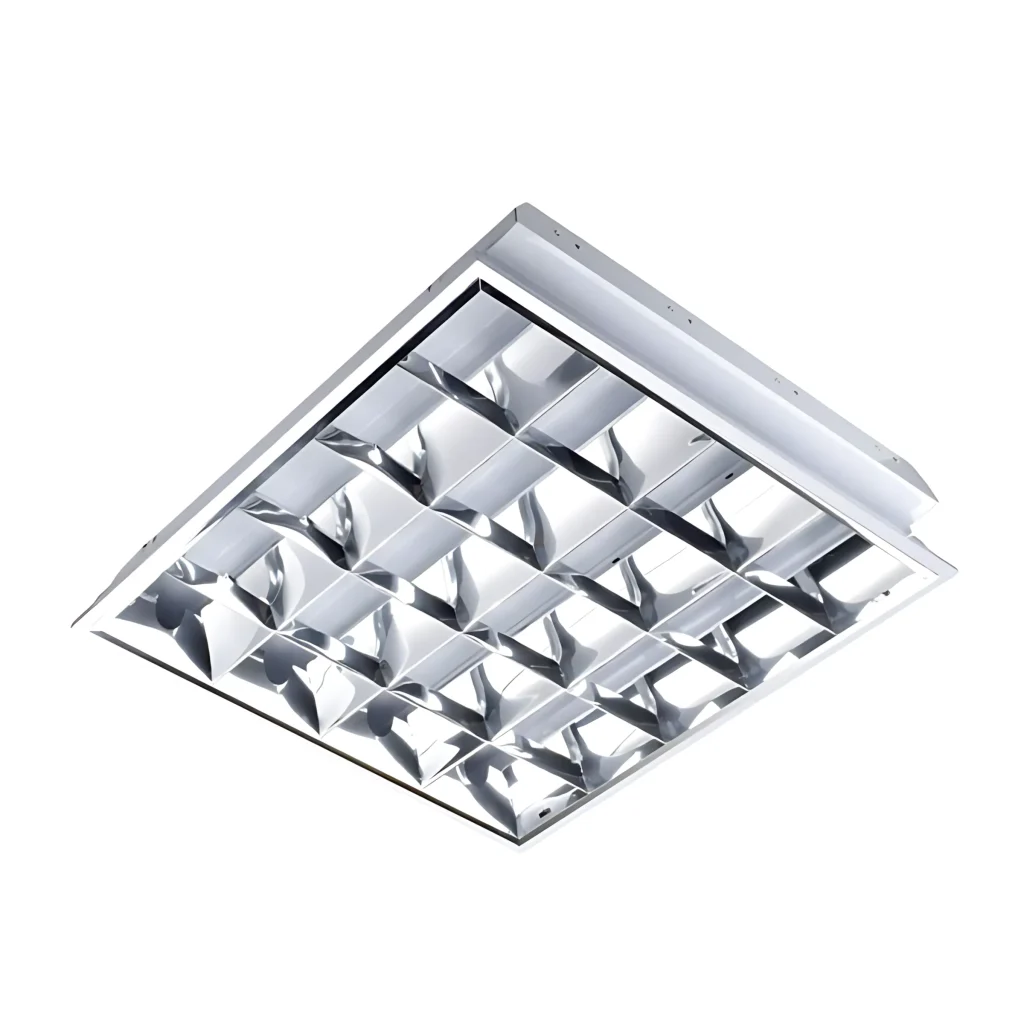
Ensuring Longevity: Installation, Maintenance, and Troubleshooting for LED Troffers
Proper installation and ongoing maintenance maximize the lifespan of your LED Troffer Lights. They also ensure sustained performance and efficiency.
Diverse Installation Methods for Flexibility
LED Troffer Lights offer flexibility in installation. The method often depends on your ceiling type.
- Lay-in Installation: This is the most common method. It suits T-grid or drop ceilings. Installers simply place the fixture into the ceiling grid. It's quick and straightforward.
- Recessed Installation: This requires specific housing. It sits within the ceiling structure. This creates a very clean, integrated look. It needs careful planning.
- Surface Mount: Use this when no drop ceiling is present. The fixture mounts directly to the ceiling surface. It offers a low-profile solution.
- Pendant Mount: This allows the fixture to hang from the ceiling. It can add an architectural element. It also works well in rooms with high ceilings.
Simplified Maintenance and Long-Term Savings
LED Troffer Lights require minimal upkeep. Their design contributes to this ease.
- Minimal Cleaning: Periodic dusting is usually sufficient. This is because light sources are often enclosed. This protects components.
- Driver Replacement: This is the primary maintenance task. However, it is far less frequent. Fluorescent tubes needed constant changing.
- Reduced Labor: The extended lifespan of LEDs means less labor. Less time and money are spent on maintenance. This results in significant operational savings.
Common Issues and Troubleshooting for LED Troffer Lights
Even with advanced technology, some questions arise. Knowing common issues helps.
- Dimming Compatibility: Ensure your troffer drivers are compatible. They must work with your chosen dimming switches. Incompatibility can cause flickering or inconsistent dimming.
- Humming/Buzzing: High-quality LED Troffer Lights should be silent. If noise occurs, it may indicate an issue. This could be a wiring problem. Alternatively, it might be a faulty driver.
- Light Degradation: LEDs last long. However, light output gradually decreases over time. This is known as lumen depreciation. Factor this into your long-term planning. Plan for eventual replacement based on acceptable light levels.
- Professional Assistance: For complex electrical issues, always consult. Contact a qualified electrician. A lighting professional can provide expert troubleshooting.
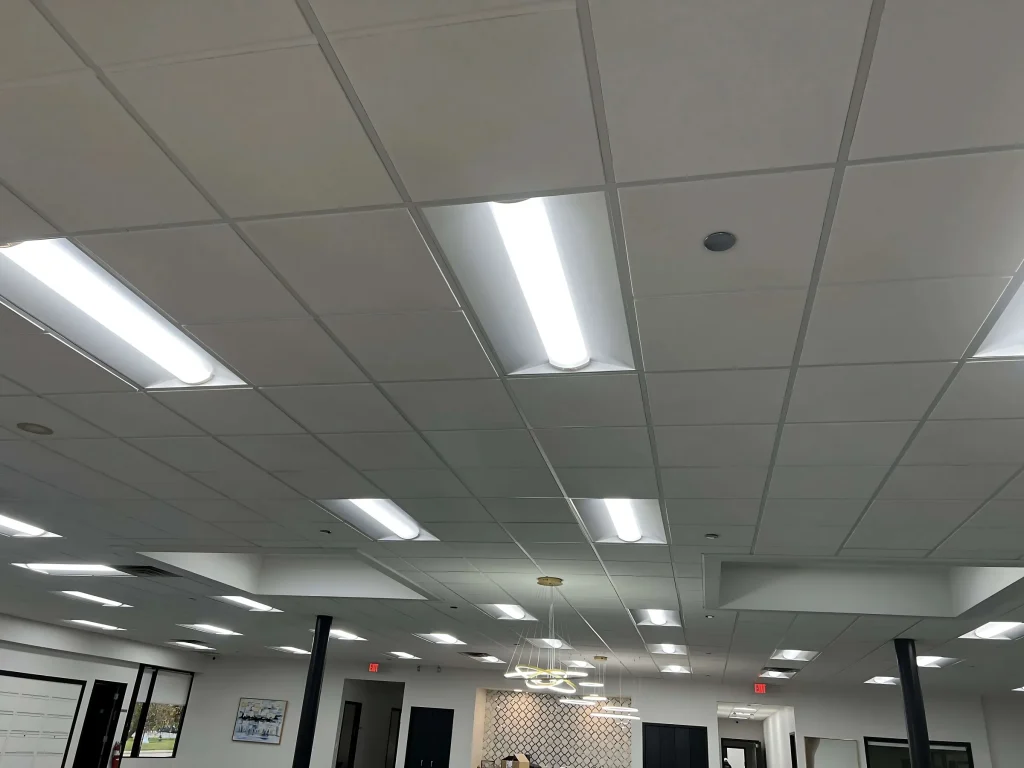
Conclusion
Choosing the right LED Troffer Lights is undeniably a pivotal decision. It stands as a significant investment in your operational efficiency and the well-being of your occupants. By providing optimal illumination, you directly enhance productivity and create a more comfortable environment. Understanding key metrics—such as precise lumens requirements, the nuanced impact of color temperature, and the critical importance of glare control—enables you to make truly informed decisions. Furthermore, wholeheartedly embracing advanced smart, human-centric lighting solutions proactively positions your space at the forefront of future technological integration.
We firmly believe that superior lighting fundamentally empowers superior performance. Are you ready to catalyze this transformation within your space? Do not allow outdated or inadequate lighting to hinder your potential. Take the decisive step. Contact our dedicated lighting specialists today for a complimentary consultation. We are poised to provide tailored solutions, meticulously designed to create a smart, healthy, and exceptionally efficient LED Troffer Lighting environment perfectly suited to your unique needs.
Frequently Asked Questions (FAQ)
Q1: What are the primary benefits of upgrading to LED Troffer Lights from older fluorescent fixtures?
A: Upgrading to LED Troffer Lights offers significant benefits. These include substantial energy savings (up to 60%), a longer lifespan, and superior light quality. For instance, they eliminate flickering and buzzing. They are also mercury-free.
Q2: How do I determine the correct size of LED Troffer for my ceiling grid?
A: LED Troffer Lights come in standard sizes. Common dimensions are 1x4 ft, 2x2 ft, and 2x4 ft. To find the right fit, measure your existing ceiling grid openings. For retrofits, choose a troffer that matches your current fixture's dimensions.
Q3: Can LED Troffer Lights contribute to overall energy savings beyond just their low wattage?
A: Yes, absolutely. Beyond their inherent low wattage, LED Troffer Lights boost energy savings. They integrate with smart lighting controls. These include occupancy sensors and daylight harvesting sensors. Consequently, they minimize wasted energy.
Q4: What is the significance of UGR in the context of LED Troffer Lighting for a workspace?
A: UGR, or Unified Glare Rating, is crucial for comfort. A low UGR (e.g., <19, or <16 for computer work) indicates less discomfort glare. This reduces eye strain. It also improves visual comfort for those working under the lights.
Q5: How do LED Troffers differ from LED Panel Lights, and when should I choose one over the other?
A: Both serve commercial ceilings. LED Panel Lights are thinner. They provide uniform, diffused light. They suit minimalist designs. LED Troffers have deeper housings. They offer precise light control. They are better for glare management. Choose troffers for controlled lighting or retrofits. Opt for panel lights for sleek aesthetics.


